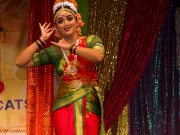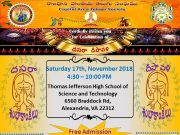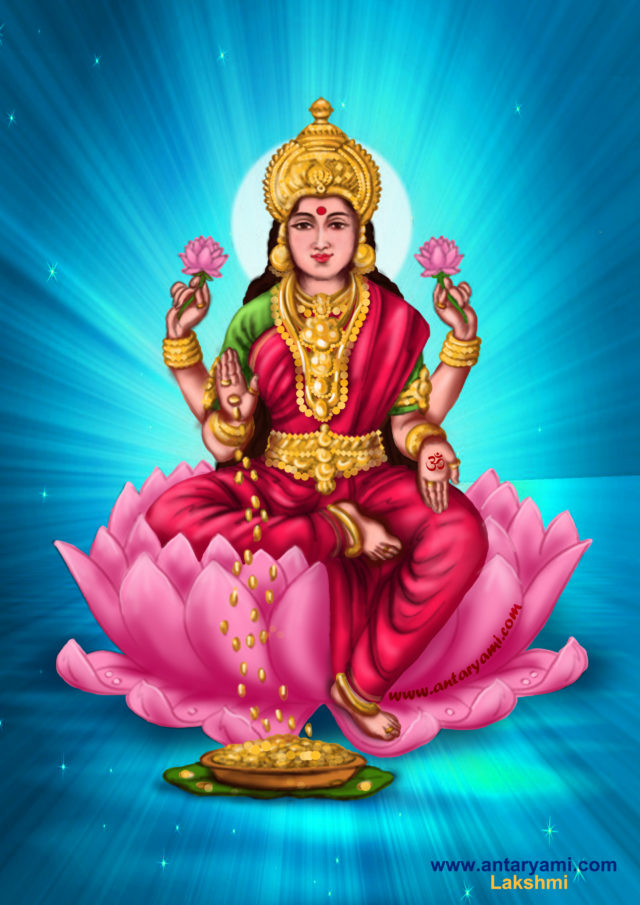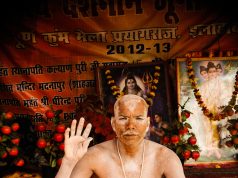The symbolic meaning of Lakshmi
In terms of our relationship with our higher conscious self and how it impacts on our physical experience, the symbolic meaning of Vishnu is easier to understand when you consider his consort, Lakshmi. When you study ancient mythology, especially Hinduism, you will notice each of the Gods has a consort, or shadow reflection of themselves. The wife’s of the Gods are sometimes projected as the feminine aspect of ourselves and sometimes the reflection of their counterpart. For example, the Vishnu Purana explains the role of Lakshmi are the manifestations of Vishnu in the many forms he takes; “When Vishnu is meaning, she is speech; Hari is polity, she is prudence; Vishnu is understanding, she is intellect, he is righteousness, she is devotion.”
In Hindu myth, Lakshmi is said to appear from the ‘churning of the milky ocean’ which represents the struggle between good and evil – or more precisely the higher conscious self, and the habitual mind of the subconscious. So whereas Vishnu is absolute consciousness, his consort Lakshmi represents our physical well-being, thus she is known as the goddess of wealth and prosperity. As we have already established, consciousness manifests as reality. Lakshmi is the physical manifestation of consciousness. Given Lakshmi appears seated on a lotus flower, she represents that we have an innate ability to become enlightened – this is what the lotus flower symbolises in several ancient cultures including ancient Egypt and Buddhism. Hindus recognize Lakshmi as the Mother Goddess and Goddess of Wealth, the nurturing side of our character that we need to adopt to bring whatever it is we focus on into fruition. In essence, Lakshmi nurtures consciousness which we see in Hindu mythology by her massaging Vishnu’s feet.
The symbols of Vishnu and Lakshmi
In Hindu art, Vishnu and Lakshmi are presented with four arms which represent prosperity, perfection, Dharma, and the freedom from emotional bondage. The devoted couple are often pictured laying on a serpent floating on a peaceful lake which represents the highest wisdom you can achieve by having a still and blissful mind. Like all the Gods and consorts of the Trimurti, Lakshmi and Vishnu are found sitting on a lotus flower, although it is usually hanging from Vishnu’s lower left hand. The lotus flower symbolically represents being in a state of enlightenment, or as Hindu’s call it Moksha, meaning to be liberated from material and emotional bondage.
In his upper right hand, Vishnu holds a discus which by some accounts represents the “spinning wheel of time.” But Vishnu uses the disk to defeat demons so from a psychological viewpoint, the disk represents the purity of mind. In the upper left hand, is a conch shell which is the symbol of creation in ancient symbolism. When the Universe was created it made a sound, represented by the om symbol. In ancient times the conch was used to awaken people in the morning, thus is used as a sound of awakening. In his lower right hand, Vishnu holds a Mace which represents the destructive nature of consciousness manifesting into reality. The Mace, known as the Kaumodaki, is said to represent the punishment handed out by Vishnu when we fail to follow Dharma which prevents our consciousness from evolving.


























